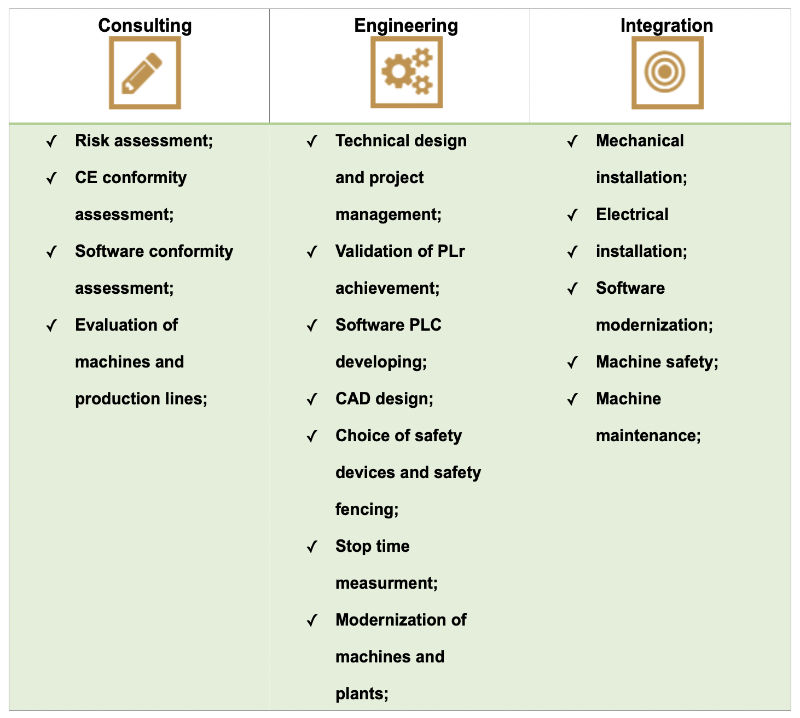
In order to maintain the efficiency, value and proper functioning of a plant, scheduled maintenance is essential, which allows you to remain competitive and productive.
It is essential and mandatory to take care of employees safety and ensure an optimal working environment, as well.
For this reason we work on your machine or packaging line to perform revamping and improvements aimed at increasing or guaranteeing the required productivity.
In the same way, we also intervene to increase the level of safety with the aim of protecting the health and safety of your collaborators.
The sum of the these two activities will allow you to extend the life cycle of your packaging line, obtaining a ROI of absolute interest (if compared to the purchase of a new machine) and guaranteeing legal safety for the company and managers.
What Machinery Directive 2006/42/EC asks?
RECITAL 14) The essential health and safety requirements should be satisfied in order to ensure that machinery is safe; these requirements should be applied with discernment to take account of the state of the art at the time of construction and of technical and economic requirements.
Recital 14 introduces the concept of ‘the state of the art’ which shall be taken into account when applying the essential health and safety requirements (EHSRs) set out in Annex I. This concept is very important as it means that the EHSRs are not absolute requirements irrespective of economic cost and technical possibilities available on the market for manufacturers. If an evolution of the state of the art makes it possible to approach the objectives set out in the EHSRs more closely, a manufacturer producing a series of machines according to the same design must upgrade his design accordingly.
According to these norms and Directive:
Machinery Directive 2006/42/EC;
UNI EN ISO 12100 : 2010 (safety of machinery – General principles for design – Risk assessment and risk reduction);
UNI EN ISO 13857 : 2008 + EC1 : 2010 (Safety of machinery – Safety distances to prevent hazard zones being reached by upper and lower limbs);
UNI EN ISO 14120 : 2015 (Safety of machinery – Guards – General requirements for the design and construction of fixed and movable guards)
EN ISO 14119 : 2013 (Safety of machinery – Interlocking devices associated with guards – Principles for design and selection)
UNI EN ISO 13849-1 : 2016 (Safety of machinery – Safety-related parts of control systems – Part 1: General principles for design);
